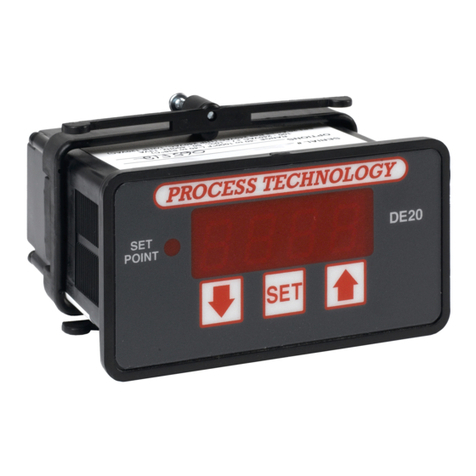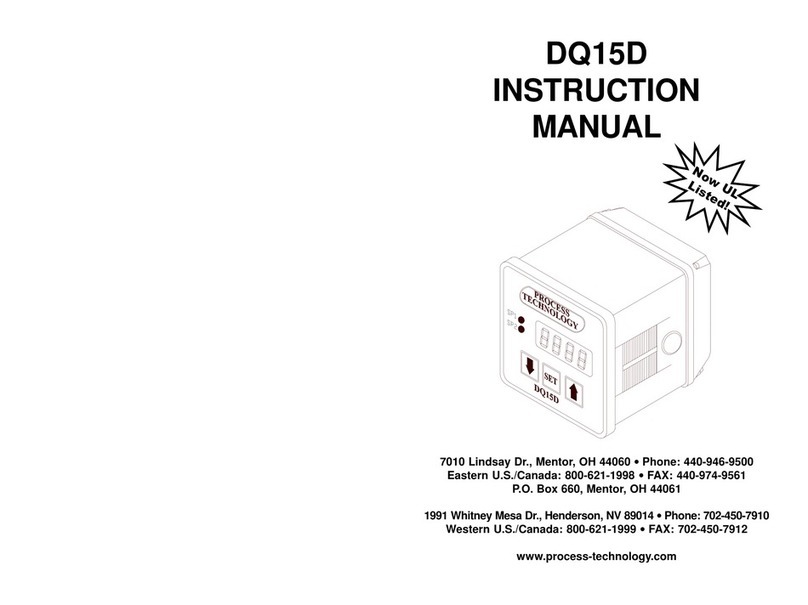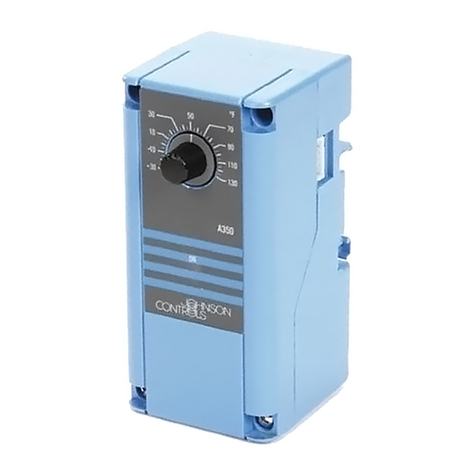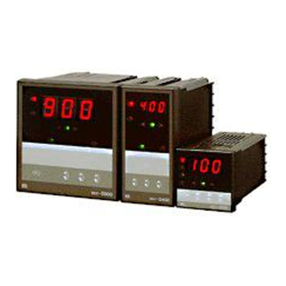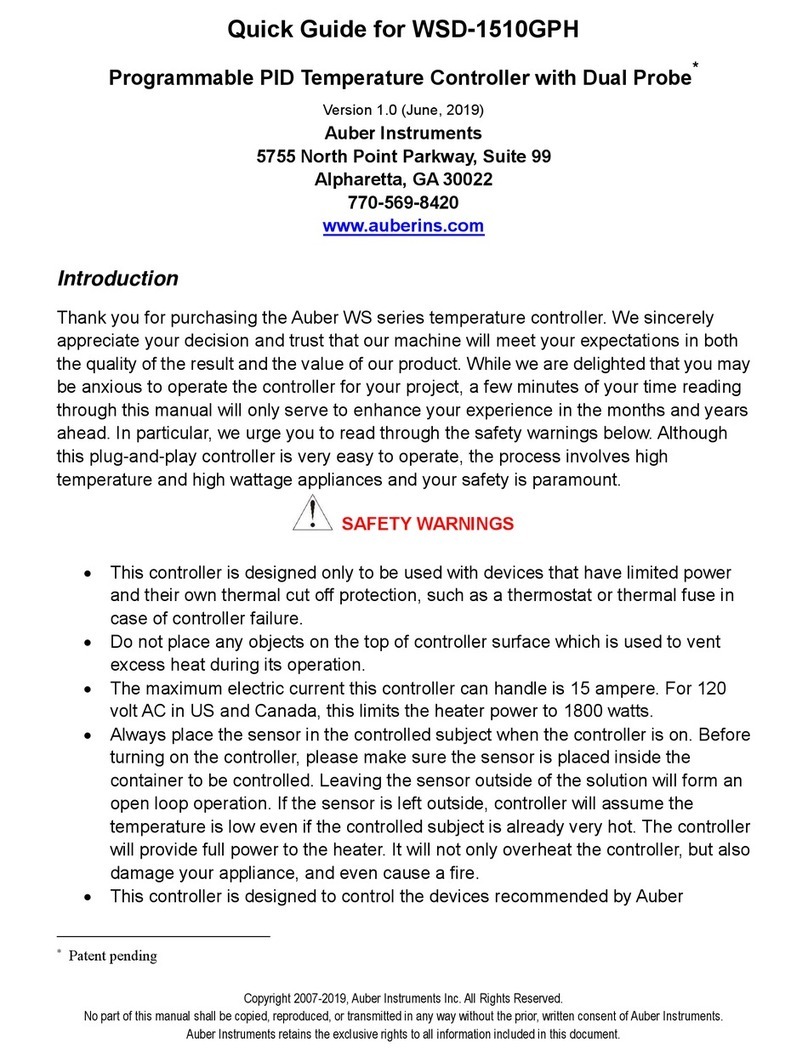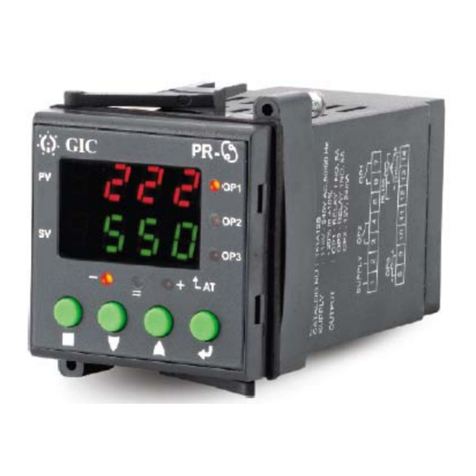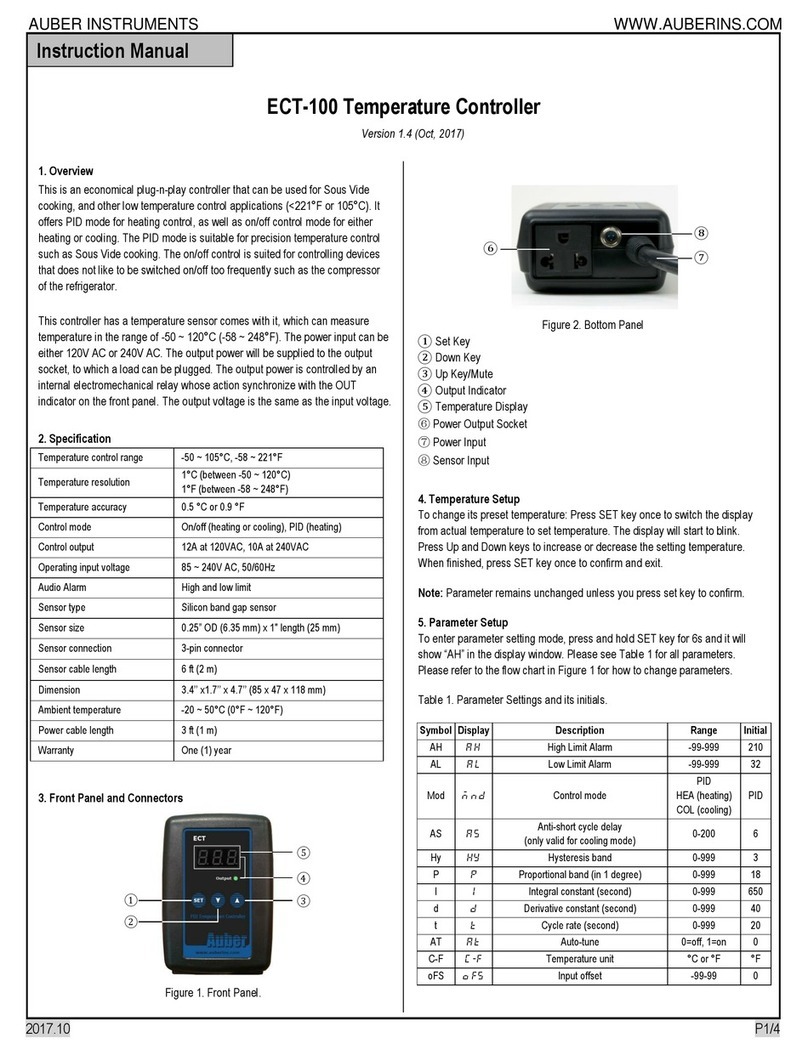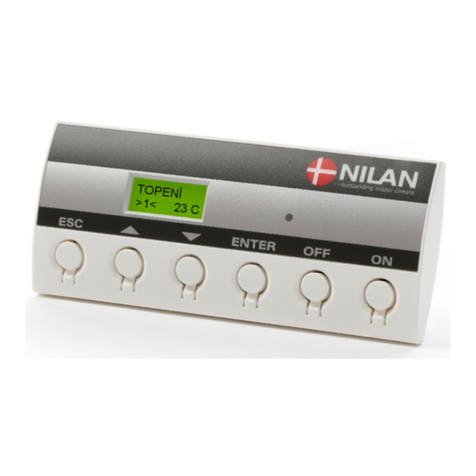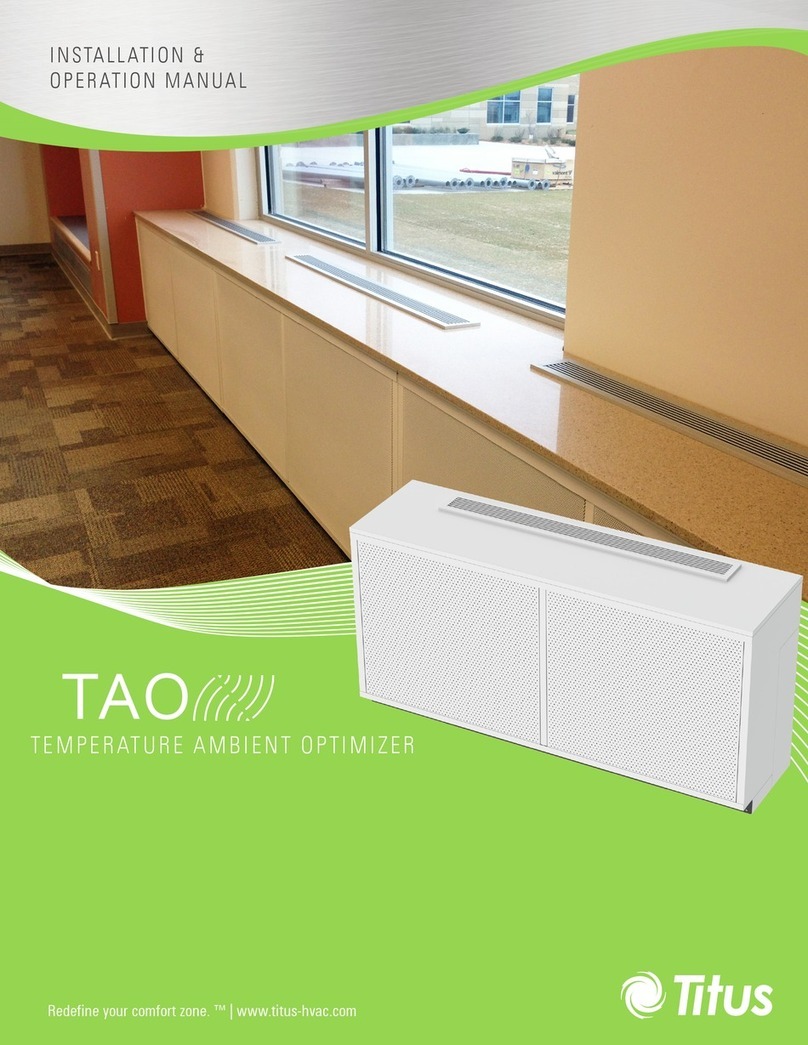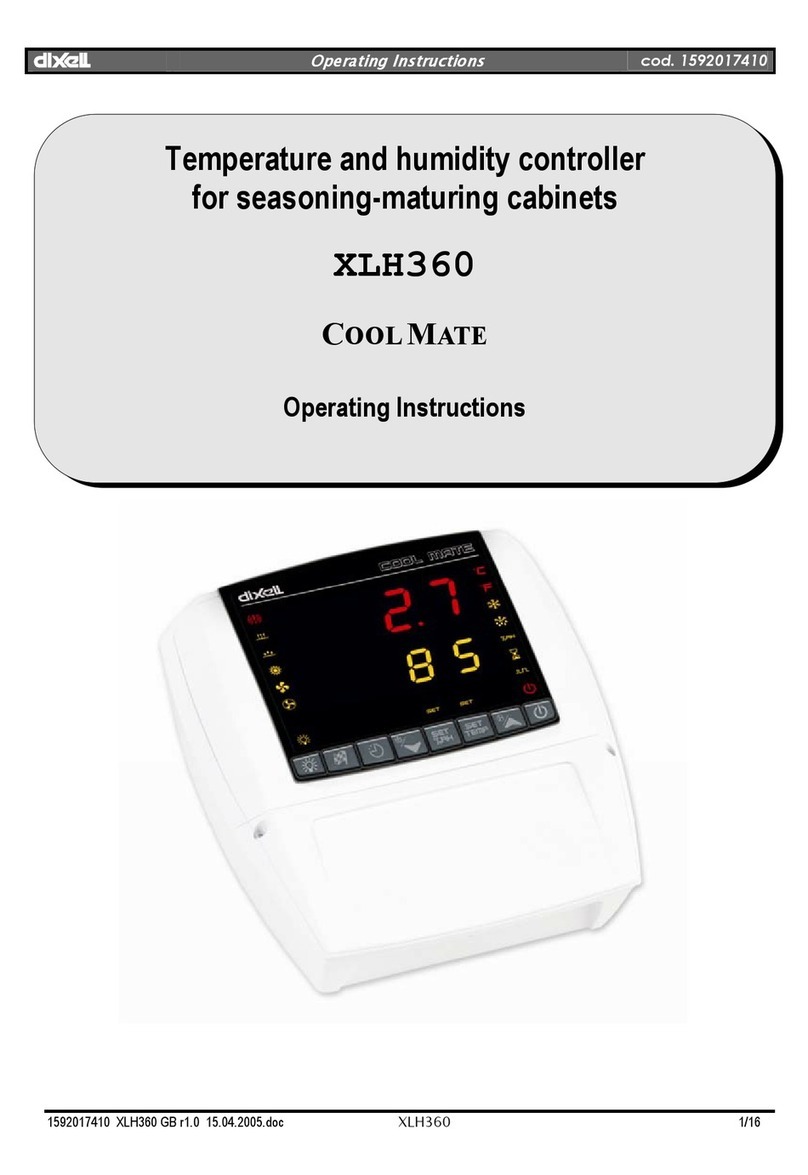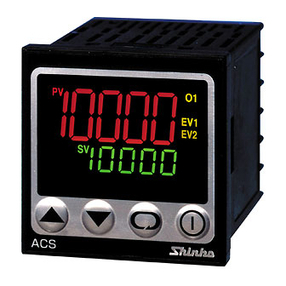Process Technology DQ15D Use and care manual

M-34-01
Revision-Date: 01-04/23/08 DQ15DManual
1
DQ15D
Digital Temperature Control
Installation, Operation and
Calibration Manual
7010 Lindsay Dr., Mentor, OH 44060 • Phone: 440-974-1300
U.S./Canada: 800-621-1998 • FAX: 440-974-9561
P.O. Box 660, Mentor, OH 44061
www.process-technology.com

M-34-01
Revision-Date: 01-04/23/08 DQ15DManual
2
COPYRIGHT 2002 Process Technology
All rights reserved. Any reprinting or unauthorized use without written
permission of Process Technology is expressly prohibited.
The information in this manual has been carefully checked and is believed
to be accurate; however, no responsibility is assumed for omissions or
inaccuracies.
All information in this document is subject to change without notice.
This document contains proprietary information and is subject to the
conditions that the information:
•Be retained in confidence.
•Not be reproduced or copied in whole or in part.
Not be used or incorporated as part of any product except under an express
written agreement with Process Technology.
AgencyApprovals
UL/CUL/CE
Important Note: The DQ15D is
designed for indoor installations
ONLY.
Electrical Noise / Interference
Process Technology electronic controls are engineered, tested and
manufactured to conform to Europe’s CE levels of electrical noise and
interference found in typical industrial installations.
It is always possible for electrical noise and interference to exceed the level
of designed-in protection. This can happen, for example, if arc or spot-
welding equipment is close to the control or if they share a common
power line. It can occur if flame ignition systems or electrostatic
precipitators are in the vicinity of the control.
A more common source of interference occurs when the control is
switching inductive loads such as contactor coils, solenoids or motors. The
collapse of the magnetic field when loads such as these are switched off
can create an electrical “spike” that can cause a malfunction of the
microprocessor used in the control.
Even if the control doing the switching is unaffected, a nearby control may
be affected. To eliminate or minimize this problem, transient suppressors
or “snubbers” can be employed across the inductive load.

M-34-01
Revision-Date: 01-04/23/08 DQ15DManual
3
Contents
General Description.................................................................... 5
Installation ................................................................................... 5
Wiring ........................................................................................... 6
Over Temperature Protection.................................................. 6
Power, Heating/Cooling .......................................................... 7
Extending Wiring .................................................................... 7
Relay Control Set Points ............................................................ 8
View/Change Set Points ......................................................... 8
SP1 - Heat Set Point............................................................... 8
SP2 - Cool Set Point............................................................... 8
P-Power Save Set Point ......................................................... 9
Alarm Set Point ....................................................................... 9
Calibration ................................................................................... 9
2 Wire RTD ............................................................................. 9
3 Wire RTD ............................................................................11
Resistance Signal ................................................................. 12
Voltage Signal....................................................................... 12
Current Input ......................................................................... 14
Frequency Signal (Pulse Train) ............................................ 14
Thermocouple ....................................................................... 15
4-20mA Output Option.......................................................... 16
Error Conditions........................................................................ 17
Calibration Error Messages .................................................. 17
RTD Error Messages ............................................................ 18
Configuration (Set-up) .............................................................. 18
Adjust Configuration Setting................................................. 18
Sensor DIP Switch ................................................................ 18
Main Menu Summary ................................................................ 19
U1, Sensor Type ................................................................... 19
U2, Signal Offset................................................................... 20
U3, Output Signal Offset....................................................... 20
U4, Signal Filter .................................................................... 20
U5, SP1 Set Point Dead Band ............................................. 20
U6, SP2 Set Point Dead Band ............................................. 21
U7, Power-Save Set Point Dead Band................................. 21
U8, Display Stabilizer ............................................................ 21
L, Set Point Limit................................................................... 21
F1, SP2 and U7 Disable ....................................................... 22
F2, Heating or Cooling Switch .............................................. 22
F3, Alarm On/Off Switch ....................................................... 22
F4, Unit Display Enable ........................................................ 22

M-34-01
Revision-Date: 01-04/23/08 DQ15DManual
4
2 wire- 1000 ohm RTD TCR (alpha),
0.00385 ohm/ohm/°C
RTD Self Heating Coefficient:
5° C/w in 0.2 m/s water; 200° C/w in
1 m/s air measurement current, 0.1 to 0.2 mA
-40 to 1000°F (-40 to 538°C)
°F or °C field selectable
Set Point Range Selectable throughout the input range
De-energize control output (No sensor short
protection with Thermocouple sensor)
Accuracy ± 0.25% span, ± 1 digit
NEMA 12IP55
Face suitable for panel mounting
(#20 ga. through 1/4 thick panels)
Display 4 digit, (1/2" nominal), LED display screen
Control Function ON/OFF Electromechanical Relays
SP1 Set Point
(reverse acting) SPDT 20A resistive@240 VAC max
1HP@240 VAC max, 1/2 HP@120VAC
SP2 Set Point
1/10 HP@240 VAC max, 1/20 HP @ 120 VAC
(direct acting) SPDT 2A resistive @240 VAC max
Field adjustable
1° (F or C) to 99°
Memory Nonvolatile
Supply Voltage 85 to 240 VDC or VAC, 50 through 400 Hz, 4VA.
-20 to 140°F (-33 to 60°C)
in a sealed NEMA 12 style case
RTD 2 & 3-wire 100 ohm 0.00385 ohm/ohm/ºC or
0.00392 ohm/ohm/ºC
Thermocouples - (types J, K, T, R)
NIST Monograph 175, revision ITS-90
Current 4-20mA DC
Voltage (1-10 VDC)
Frequency (0-200 Hz, counts/second),
+/- 6 VDC p to p (up to 30VDC peak with Sw2 ON)
4-20 mA DC proportional to the process
(display) value. Maximum impedance 450 ohms.
Output Option
Control Outputs
Standard Input
Input Range
Sensor Break or
Short Protection
Enclosure
ON/OFF
Differential
Operating
Temperature
Input Options
DQ15D Specifications

M-34-01
Revision-Date: 01-04/23/08 DQ15DManual
5
Installation
DQ15D is for indoor use only.
1Unpack and inspect DQ15D for
damage upon receipt. Shipping
damage claims must be made
through the freight carrier.
2Remove rear cover and inspect
DQ15D for internal damage.
3Remove the Retaining Collar.
Insert a flathead screwdriver under
the collar on alternating sides while
sliding the collar back.
4Cut a 1
/4DIN finished opening:
3.625" x 3.625" (92 mm x 92 mm) in
the desired mounting panel location.
5Select one or more knock-outs
from the three (3) knockouts on the
rear cover or enclosure side panels
that offers the most convenient
routing for external wiring.
Caution
Avoid damaging DQ15D components.
Remove rear cover before removing
knockouts with a hammer/punch.
(Inst allation continued on p age 6)
General Description
The DQ15D digital temperature
control is a programmable and
microprocessor-based controller
designed to operate two relays for
temperature control.
Features
The temperature sensor (RTD or
thermocouple) sends a signal to the
DQ15D to compare to a value
preset by the user as a Set Point
(SP). Set Points LEDs are SP1 and
SP2 on the front panel.
• In heating mode if the sensor
signal is lower than the
SP1
Set
Point value, DQ15D energizes the
SP1
relay and its isolated contacts
close.
• In cooling mode if the sensor
signal is higher than the
SP2
Set
Point value, DQ15D energizes
SP2
relay and its isolated contacts close.
• DQ15D has an optional Alarm
Condition feature. After you
activate this feature, when the
sensor signal exceeds the Alarm Set
Point, DQ15D goes into an alarm
condition. In an Alarm Condition,
both relays de-energize and the
screen displays a flashing AAA.
• The power save, night setback
feature permits the use of a second
heating Set Point to conserve
energy when required.
General Description
DQ15D User Interface - SET,
Decrease and Increase Keys
DQ15D Dimensions and Installation

M-34-01
Revision-Date: 01-04/23/08 DQ15DManual
6
Wiring
This section provides wiring notes
for Power Heating/Cooling relays
and Over Temperature Protection.
Over Temperature Protection
Component failure in a temperature
controlled process can result in
damage to the product, heater over
temperature, and the possibility of a
fire. To safeguard against these
hazards, install over temperature
protection to interrupt the heater
power supply in case of low
solution level.
Process Technology heaters include a
thermal fuse standard (Protector I, II,
or III) on the heater to monitor
heater surface temperature. These
devices are designed to cut the power
to the heater in case of low solution
level. In addition to thermal protec-
tion, Process Technology strongly
recommends the use of liquid level
controls to monitor solution level
and shut off heaters prior to over
temperature conditions.
Ensure you read and adhere to all
Over Temperature Protector
Installation instructions and
warnings.
6Remove the knockouts before
reattaching the rear cover or
inserting the control in the panel.
7Insert DQ15D through the
prepared opening and slide the
retaining collar over the case from
the rear of the panel.
8Hand tighten the collar, securely
tighten the two (2) collar screws.
9Install a suitable liquid-tight
conduit fitting through the knock-out
opening following manufacturer
instructions and install field wiring.
10 Using the Power, Heating and
Cooling Relay Wiring illustration in
this chapter, install the required
input and output wires. Use
National Electric Code and local
codes for determining wire sizing,
insulation, terminations, etc.
Warning
Overtemperature protection is
required in any system where a fault
condition resulting in high tempera-
ture could produce a fire or hazard-
ous condition. Operation without
thorough safety precautions can
result in equipment failure, property
damage and personal injury.
Installation and Wiring
Typical Heater Installation only. Follow your system-specific installation instructions.

M-34-01
Revision-Date: 01-04/23/08 DQ15DManual
7
Extending Wiring
Except when wiring thermocouples,
you can extend the factory supplied
1000 ohm RTD sensor with standard
22awg or larger electrical hookup
wire. The effect of an additional 22
awg sensor wire length on the value
is approximately 1°F for every 65 ft.
Warning
When dealing with THERMO-
COUPLES, you MUST use specific
thermocouple wire when extending
the sensor wire length. Use of
incorrect extension wire can cause
hazardous operating conditions.
Power, Heating/Cooling
Relay Equipment Needed
• #2 Phillips head screwdriver.
• 1/8 (x-small) straight blade
screwdriver.
• Power supply wire, 18 awg min
• Relay connection wires
Procedure
1DQ15D is intended for a single
power source. Refer to the Power,
Heating and Cooling Relay Wiring
illustration when wiring DQ15D.
2Locate and identify terminal
locations for the power supply
voltage, Set Point relay, and sensor.
3Connect wires to the designated
terminals and tighten retaining
screw to secure the wire into place.
See state and local electrical require-
ments for proper 65°C wire gauge.
See the Specifications chart in the
beginning of this manual for Voltage,
Current, Frequency and other DQ15D
Specifications.
Power, Heating /Cooling Relay Wiring
Over Temperature Protection Device with Low Level Cut-off Sample Wiring
Wiring

M-34-01
Revision-Date: 01-04/23/08 DQ15DManual
8
View/Change Set Points
The screen normally displays the
actual process temperature.
SP1 - Heat Set Point
1To view the SP1 SET POINT value,
press once and release. For seven
seconds, the letter H and a decimal
point followed by the numeric SP1
value display. (After seven seconds
the display returns to normal.)
2To alter the Set Point value,
press
SET
while the Set Point value
displays (value will flash).
3Once the value flashes, use
or to change the value.
4Within 5 seconds after changing
the value, press
SET
again to lock
the new value into memory.
Note - If you don’t press
SET
within 5
seconds of changing the value, the
new value will be lost and the Set
Point value will revert to its previous
setting.
SP2 - Cool Set Point
1To view the
SP2 SET POINT
value, press twice and release.
For seven seconds, the letter C
and a decimal point followed by
the numeric SP2 value display.
(After seven seconds the display
returns to normal.)
2To alter the Set Point value,
press
SET
while the Set Point value
still displays (value will flash).
3Once the value flashes, use
or to change the value.
4Within 5 seconds after changing
the value, press
SET
once more to
lock the new value into memory.
Relay Control Set Points
Before operation, you must program
Set Points or temperature limits.
When DQ15D reaches the Set Point
it will energize one or both relays.
•SP1 Heat Set Point for normal
Heating Mode operation. Controls
SP1 relay.
•SP2 Cool Set Point for normal
Cooling Mode operation. Controls
SP2 relay.
•PPower Save Set Point for a
second heating Set Point lower
than SP1 Heat Set Point. Optional;
you must enable Power Save
feature. Controls SP1 relay.
•A Alarm Set Point to establish an
Alarm Condition if temperature
reaches the Alarm Set Point
(higher than SP1 Set Point). The
screen displays a flashing AAA
in an Alarm Condition. Optional;
you must enable Alarm feature.
Controls SP1 and SP2 relays.
Note: The units displayed, °C, °F, Hz,
volts, mA or ohms are established
during the setup of the control.
Values for Set Points can range from
-40 to +999 (DQ15D numeric range).
Relay Control Set Points
DQ15D User Interface - SET,
Decrease and Increase Keys

M-34-01
Revision-Date: 01-04/23/08 DQ15DManual
9
Calibration
Calibration
This section includes calibration
procedures for 2 & 3 wire RTDs,
Resistance, Voltage, Current Input,
Frequency, and Thermocouples.
Warning!
Calibration procedures require the
removal of the rear cover of the
control. It also requires that power is
ON, exposing the technician to
potentially lethal voltages. Always
Exercise EXTREME CARE and wear
tested electrician’s gloves when power
is on.
2 Wire RTD
RTD devices are precision resistors
whose resistance value varies with
temperature. DQ15D measures RTD
resistance and compares that value
with a standard set of values stored
in memory. You can restore, update
or verify that this standard set of
values is correct.
Equipment needed
• Two precision resistors (tolerance
+/- 0.1% or better) with a fixed
value equal to the RTD nominal
value (i.e. 1000 ohms).
• A suitable jumper cable to
facilitate changing input
resistance.
P-Power Save Set Point
1To turn on the Power-Save
feature, do one of the following
tasks, never do both:
• either press all three keys ( ,
SET
, and ) simultaneously, or
• install an external switch to close
contacts #3 and #4 on the rear
terminal strip.
When the control is operating in
Power-Save mode, the display will
alternately change between the
process value and three dashes ---.
2Return to normal
SP1
operation
with one of the following tasks:
• either press all three keys ( ,
SET
, and ) simultaneously, or
• switch OFF the remote switch
wired to terminals #3 and #4.
3To view the P
SET
POINT value,
press once and release. The
control will display the letter P and
a decimal point followed by the
numeric P
SET
POINT value.
4To change the Set Point value,
press
SET
while the P
SET
POINT
value displays (value will flash).
5Once the value flashes, press
or to change the value.
6Press
SET
once to lock the new
value into memory.
Alarm Set Point
1
Enable the Alarm feature. See
Configuration (Setup), F3 Alarm
On/Off Switch for instructions.
2Press twice and release. The
letter A, followed by a decimal point
and the Alarm Set Point value
displays. (After a few seconds the
screen returns to normal.)
3To change the ALARM SETPOINT,
press
SET
while the alarm Set Point
value still displays (value will flash).
4When it flashes, use or to
change the value, and press
SET
to
lock the new value into memory.
Note: Alarm Set Point is not a safety
device.
Before Beginning RTD Calibration

M-34-01
Revision-Date: 01-04/23/08 DQ15DManual
10
Calibration
Calibration Procedure
1Turn OFF all power.
2Remove rear cover.
3Ensure the 2 wire, 1000 ohm
RTD sensor is connected across
terminals #1 AND #2 of the
terminal block before beginning.
4Remove RTD sensor.
5Install the precision resistors in
place of the RTD, as shown.
7Carefully restore power to the
control, taking precautions not to
make contact with any exposed
voltage sources.
8Press and hold and
simultaneously for approximately 6
seconds. The display will indicate
AC.0
. While the
0
is flashing, use
to change this to
22
. Press
SET
.The
control screen displays
CAL1
.
9Press and hold
SET
for 1 second.
HoLd
displays on the screen.
Wait for
CAL2
to display.
10 Proceed with caution to avoid
SHOCK hazard. Remove and
relocate one end of the jumper
cable to the loose end of the
second precision resistor for the
second resistance value (i.e. 2000
ohms), as shown.
RTD Calibration - Precision Resistors
in Place of the RTD Sensor
RTD Calibration - Jumper Cable in
Place for Second Resistor
6Install the jumper cable between
the loose end of one resistor and the
fixed end of the other resistor to
establish an input value of a single
resistor (i.e. 1000 ohms), as shown.
RTD Calibration - Jumper Cable in
Place for First Resistor
11 Press and hold
SET
for 1 second.
The screen displays
HoLd
. WAIT
for the display to reset. After
resetting, the connected precision
resistors’ approximate temperature
value should display (i.e. 511° F or
266° C).
12 Turn OFF power and remove
the precision resistors. Reinstall the
RTD sensor and the rear cover of
the controller. Return the calibrated
control to service.

M-34-01
Revision-Date: 01-04/23/08 DQ15DManual
11
4Install the short piece of jumper
wire from terminal #1 to #3.
5Install the precision resistors in
place of the RTD sensor, as shown
in terminals #2 and #3.
3 Wire RTD
Optional PCN 5447 or 5416 board
needed. This board will accept 2
wire RTDs as well. RTD devices
are precision resistors whose
resistance value varies with
temperature. The connection of a
third wire eliminates the natural
resistance of the lead wires to
improve sensor accuracy. The
DQ15D control measures the RTD
resistance (and the third wire
resistance) and compares that
measurement with a standard set
of values stored in the memory.
You can restore, update or verify that
the standard set of values is correct.
Note: For a 1000 ohm sensor, the DIP
switches should be OFF, OFF, OFF.
For 100 ohm, ensure the DIP switches
are ON, OFF, OFF. See Dip Switch
Settings in Configuration (Setup).
Equipment needed
• Two precision resistors (tolerance
+/- 0.1% or better) with a fixed
value equal to the RTD nominal
value (i.e. 1000 or 100 ohms).
• A suitable jumper cable to
facilitate changing input
resistance.
• A short piece of jumper wire
(simulates third wire).
Warning!
Calibration procedures require the
removal of the rear cover of the
control. It also requires that power is
ON, exposing the technician to
potentially lethal voltages. Always
Exercise EXTREME CARE and wear
tested electrician’s gloves when
power is on.
Calibration Procedure
1Turn OFF all power.
2Remove rear cover.
3Remove RTD sensor.
Calibration
Precision Resistors in Place
6Install the jumper cable between
the loose end of one of the resistors
and the fixed end of the other resistor
to establish an input value of a single
resistor (i.e. 1000 ohms or 100 ohms),
as shown.
Establishing Resistor Input Value
7Carefully restore power to the
controller. Do not come in contact
with any exposed voltage.
8Press and simultaneously
and hold for approximately 6 sec.
The screen displays
AC.0
.While the
0
is flashing, use to change this to
22
. Press
SET
.
CAL1
displays.
9Press and hold
SET
for one sec.
The screen displays
Hold
.Wait for the
message to change to
CAL2
.

M-34-01
Revision-Date: 01-04/23/08 DQ15DManual
12
Calibration
Resistance Signal
This section describes how to
configure and calibrate DQ15D to
measure pure resistance.
Equipment needed
Refer to the calibration procedure
for the 2 wire RTD sensor for
equipment needed.
Calibration Procedure
1From the setting configuration
mode, set the U1 sensor type
parameter to 12.
See
Configuration
(Setup).
2Follow the Calibration Proce-
dure for a 2 wire RTD sensor.
DQ15D will then measure pure
resistance from 0-1000 ohms.
Voltage Signal
The DQ15D control measures DC
voltage and compares that
measurement with a standard set
of values in the control memory.
Warning!
Calibration procedures require the
removal of the rear cover of the
control. It also requires that power is
ON, exposing the technician to
potentially lethal voltages. Always
Exercise EXTREME CARE and wear
tested electrician’s gloves when power
is on.
10 Proceed with CAUTION to avoid
SHOCK hazard. Remove and
relocate one end of the jumper cable
to the loose end of the second
precision resistor for the second
resistance value (i.e. 2000 ohms or
200 ohms), as shown.
Establishing Second Resistor Value
11 Press and hold
SET
for one
second. The screen displays
Hold
.
Wait for the display to reset. After it
resets, the approximate temperature
value for the connected precision
resistors should display (i.e. 511° F or
266° C).
12 Turn OFF power to the control-
ler and remove the precision
resistors. Retain for future use.
Reinstall the RTD sensor and rear
cover of controller. Return the
calibrated control to service.

M-34-01
Revision-Date: 01-04/23/08 DQ15DManual
13
Calibration
Verify Standard Values
To restore, update or merely verify
that this standard set of values is
correct, do the following:
• Make sure that the DIP switch
settings are OFF, ON, OFF. See
Dip Switch Settings in
Configuration (Setup).
• The voltage signal must be
connected across terminals #1
and #2 of the Adder Board
(PCN 5416 or 5447). Terminal
#2 is common (negative), and
terminal #1 is the signal
connection (positive).
•Always observe polarity.
Calibration Procedure
1Turn OFF all power.
2Remove rear cover.
3Remove voltage input wiring.
4Install a voltage calibrator or
power supply to terminals 1 and 2.
Verify Standard Set of Values for
Voltage Signal
Voltage Calibration
5CAREFULLY restore power to
the controller, ensuring that you do
not come in contact with any
exposed voltage.
6Press and simultaneously
and hold for approximately 6
seconds. The screen displays
AC.0
.
While the
0
is flashing, use to
change this to
22
. Press
SET
.The
control screen displays
CAL1
.
7Adjust power supply to 1.0V.
8Press and hold
SET
for one
second. The screen displays
Hold
.
Wait for display to change to
CAL2
.
9Adjust calibrator to 10.0V.
10 Press and hold
SET
for one
second. The screen displays
Hold
.
Wait for display to reset and display
10.0.
11 Turn OFF power to the control
and remove the calibrator. Reinstall
the voltage input and the rear cover
of the control. Return the cali-
brated control to service.

M-34-01
Revision-Date: 01-04/23/08 DQ15DManual
14
Current Input
Optional PCN 5447 or 5416 board
needed. The DQ15D control
measures the DC current and
compares that measurement with a
standard set of values in the
control memory. To restore, update
or merely verify that this standard
set of values is correct, do the
following:
• Check that the DIP switches are
set to OFF, OFF, ON. See Dip
Switch Settings in Configuration
(Setup).
• Terminal 1 is positive, terminal 2
is negative.
Equipment needed
• A precision, NIST traceable, 0-20
mA DC current calibrator OR
a precision, NIST traceable,
digital ammeter or DMM
• a regulated linear DC power
supply with an adjustable 0-10
volt or better output and,
• a 400 ohm, 0.1% or better
tolerance, precision resistor.
Warning!
Calibration procedures require the
removal of the rear cover of the
control. It also requires that power is
ON, exposing the technician to
potentially lethal voltages. Exercise
EXTREME CARE and wear tested
electrician’s gloves when power is
on.
Calibration Procedure
1Turn OFF all power.
2Remove rear cover.
3Remove input leads.
4Install the 0-20 mA DC calibra-
tor or the power supply, resistor
and ammeter in series with terminal
#1 and #2.
5CAREFULLY restore power to
the controller, ensuring that you do
not come in contact with any
exposed voltage.
6Press and simultaneously
and hold for approximately 6
seconds. The screen displays
AC.0
.
While the
0
is flashing, use to
change this to
22
. Press
SET
.The
screen then displays
CAL1
.
7Adjust the calibrator or power
supply to 5.0 mA.
8Press and hold
SET
for one
second. The screen displays
Hold
.
Wait for it to change to
CAL2
.
9Adjust power supply to 20.0 mA.
10 Press and hold
SE
T
for one
second. The screen displays
Hold
.
Wait for display to reset and
display 20.0.
11 Turn OFF power to the control
and remove the power supply.
12 Reinstall the voltage input and
the DQ15D rear cover and return
the calibrated DQ15D to service.
Frequency Signal (Pulse
Train)
The DQ15D measures frequency
and compares it with a standard set
of values derived from the
microprocessor oscillator.
Equipment needed
Optional PCN 5447 or 5416 board
needed.
Calibration Procedure
Since this is a dedicated frequency,
no field calibration is possible.
Check that the DIP switches are set
to OFF, OFF, OFF. See Dip Switch
Settings in
Configuration (Setup)
.
Calibration

M-34-01
Revision-Date: 01-04/23/08 DQ15DManual
15
Thermocouple
Installation requires configuration
for the specific thermocouple used.
• The two wire thermocouple is
polarized, therefore it is
necessary to connect the negative
lead wire of the thermocouple to
the #1 terminal and the positive
lead wire to the #2 terminal to
maintain proper polarity for the
PCN 5418 sensor board.
• Connect the negative lead wire to
terminal #2 and the positive to
terminal #3 for the PCN 5419
Sensor board.
Calibration Procedure
1Turn OFF all power.
2Remove rear cover.
3Remove T/C sensor.
4Install the thermocouple
calibrator to terminal #1 and #2 on
PCN 5418 board, or terminal #2
and #3 on 5419 sensor board.
5CAREFULLY restore power to
the controller, ensuring you do not
come in contact with any exposed
voltage.
6Press and keys simulta-
neously and hold for approximately
6 seconds. The display will indicate
AC.0
.While the
0
is flashing, use
to change this to
22
. Press
SET
.The
control screen displays
CAL1
.
7Adjust the thermocouple
calibrator to 0.0° C (32.0° F).
8Press and hold
SET
for one
second. The screen displays
Hold
.
Wait for display to change to
CAL2
.
9Adjust the thermocouple
calibrator to 250.0° C (482.0° F).
10 Press and hold
SET
for one
second. The screen displays
Hold
.
Wait for the display to reset and
display 250.0° C (482.0° F).
11 Turn OFF power to the control
and remove the thermocouple
calibrator. Reinstall the thermo-
couple sensor and the rear cover of
the control. Return the control to
service.
Calibration
Thermocouple Calibration
Equipment needed
Optional thermocouple sensor
board needed (PCN 5418 or 5419).
A precise, NIST traceable,
thermocouple calibrator with
suitable extension leads to match
the thermocouple type used.
Warning!
Calibration procedures require the
removal of the rear cover of the
control. It also requires that power is
ON, exposing the technician to
potentially lethal voltages. Exercise
EXTREME CARE and wear tested
electrician’s gloves whenever power is
on.

M-34-01
Revision-Date: 01-04/23/08 DQ15DManual
16
Warning!
Calibration procedures require the
removal of the rear cover of the control.
It also requires that power is ON,
exposing the technician to potentially
lethal voltages. Exercise EXTREME
CARE and wear tested electrician’s
gloves whenever power is on.
Equipment needed
•PCN 5416 or 5419 board.
•An NIST traceable sensor
simulator (calibrator), a precision
20 mA or higher calibrator/tester,
or a precision DMM for
verification.
Calibration Procedure
1Turn OFF all power.
2Remove rear cover.
3Remove sensor leads.
4Install appropriate sensor
calibrator, i.e. resistors or thermo-
couple simulator.
5Remove ONE lead of the 4-20
mA output wire and install the
DMM or tester in series with the
external loop and this terminal.
OBSERVE POLARITY.
6Restore power to control.
7Verify basic instrument sensor
input accuracy by simulating various
sensor inputs and observing the
display values. If out of tolerance,
perform appropriate sensor calibration
before proceeding.
8Simultaneously press and hold
and for approximately 6 sec. The
screen displays
AC.0
.While the
0
is
flashing, use to enter 33. The
screen changes to display L followed
by the current lower process limit,
i.e. 0°, -20°, 0V, etc.
9Use or to alter the lower
display value. Press
SET
to store the
new value. The display will then
read hexadecimal 2AAA or 4.0mA,
verify that this is the value displayed
on your 4-20 mA calibrator/tester
or DMM.
4-20mA Output Option
The DQ15D is available with an
optional 4-20 mA output signal
proportional to the measured
(displayed) temperature. This
option is useful for source
transmitting the measured
temperature to a current loop-
sensing device such as a PLC,
remote intelligent display or chart
recorder. Use Terminals #2 and #3
for 2 wire 1000 ohm RTD.
Factory calibration is verified using
an intelligent NIST traceable 4 digit
DMM, a NIST traceable sensor
calibrator, and an intelligent display.
The factory range setting is 0-500°
F vs. 4-20 mA. Custom ranges can
be accommodated if specified at
time of order. Field calibration can
use a similar arrangement or a 4-20
mA calibrator for verification.
Since calibration is an involved
operation, it is suggested that it be
performed only after determining
that the measured values differ
from factory settings, or if the
output range is to be altered.
Use Terminals #2 and #3 for 2
wire 1000ohm RTD.
4-20mA Output Option
4-20 mA Output Option

M-34-01
Revision-Date: 01-04/23/08 DQ15DManual
17
10 Press or to adjust the lower
current value. Press
SET
to retain the
value. The screen displays Ufol-
lowed by the current upper display
value limit,( i.e. 500°, 10 volt)
11 Use or to alter the upper
display value. Press
SET
to retain
the value. The display will then read
hexadecimal D555 or 20.0 mA.
12 Verify the value by observing
the value on your 4-20 mA calibra-
tor/tester or DMM.
13 Adjust the upper current output
value by pressing or . Press
SET
to retain the value. The current
sensor input value then displays
and the 4-20 mA output will reflect
your new or confirmed settings.
14 Turn OFF all power.
15 Disconnect calibration equip-
ment.
16 Reconnect 4-20 mA lead and
sensor leads.
17 Reinstall rear cover.
Error Conditions
Sensor values that are out of range
will generate an error display. The
temperature range is as follows:
Celsius: <-40° C or >+538° C
Fahrenheit: <-40° F or >+1000° F
Calibration Error Messages
If calibration or setup information
stored in the memory becomes
corrupt or erased, DQ15D
switches to its default calibration
and setup settings. A flashing letter
cdisplays on the left side when
DQ15D switches to default
settings. The size and position of
the letter c will define the exact
nature of the problem.
cA small c in the upper left-hand
corner indicates the control is
relying on default (factory set)
calibration values. This happens
when the control is new and has
not yet been calibrated (setup).
cA small c in the lower left hand
corner indicates the control is
relying on default configuration
values. This is a rare condition,
but may occur if the control has
been calibrated for use with a
two-wire RTD sensor but the
configuration parameters have
not been changed from their
default values. Changing any of
the configuration or Set Point
variables will turn off this
indication.
CA large C on the left side of the
display indicates default values
are being used for the
configuration and the calibration.
This can occur in a new control
that has never been calibrated or
configured, or if the memory has
been erased.
Error Conditions

M-34-01
Revision-Date: 01-04/23/08 DQ15DManual
18
4After the option has been deter-
mined, press
SET
once more to lock
the new value into memory.
5After completing all changes to the
configuration of the control, the new
configuration must be saved. To save
the new value, press and simulta-
neously. This will cause the control to
store the new values internally and
then reset the unit.
Sensor DIP Switch
When using the sensor 5416 or 5447
boards, an on-board DIP switch
must also be configured.
Sw1Sw2Sw3Type
OFF OFF OFF 1000 ohm RTD
ON OFF OFF 100 ohm RTD
OFF ON OFF voltage
OFF OFF ON current
OFF OFF OFF frequency
Note: Switching off power to the unit
before saving the new configuration will
cause all changes to be lost.
RTD Error Messages
If the screen displays one of the
following messages, the control
relay de-energized due to an RTD
condition.
HHH A thermocouple or RTD
sensor is improperly connected, or
the control read an open circuit.
UUU The RTD sensor shorted.
Note: Thermocouple shorts cause a
new junction/measurement point to be
created. This will lead to false readings
and dangerous operating conditions.
Shorted thermocouples will not result
in an error condition. Instead, incorrect
readings will be displayed.
Configuration (Set-up)
1To configure the DQ15D, press
and simultaneously and hold
for approximately 6 seconds. The
screen displays
AC.0
.
2While the
0
is flashing, use to
change this to
11
. Press
SET
. The
control will be in the configuration
mode. While in this mode, the
screen displays the values of
various configuration settings. The
first setting to display is the
U1
setting. See setting summary. By
using and keys, it is possible
to scroll through the list of settings
to those needing modification.
Adjust Configuration Setting
1To adjust a setting while in the
Configuration Mode, use and
to bring the particular setting into
the view on the screen.
2Press
SET
to change the value of
the setting. Once
SET
has been
released, the display will flash.
3Use and to scroll through
the options for the selected setting.
Configuration (Set-up)
Dip Switch Location
(illustration shows DIP switch setting
for 100 ohm RTD)

M-34-01
Revision-Date: 01-04/23/08 DQ15DManual
19
Main Menu Summary
LabelSettings Description
U1 SensorType Usedto selectthe typeofsensor
U2 Signal Offset Offset-9to+9 appliedtoreading
U3*,**OutputSignal Offset Adjusts 4-20 mAoutput from -9 to +9
U4 SignalFilter Filteroninput signals
U5 Set Point DeadBand (SP1) Valuefrom 1to99, SP1
U6 Set Point DeadBand (SP2) Valuefrom 1to99, SP2
U7 Power SaveSetPoint Value from 1to99,power savemode
U8 DisplayStabilizer Stability when usedwith U4
L SetPoint Limit HighSet Point limit
F1 SP2 and U7Disable Modifiescontrolto single SetPoint
F2 Heat/CoolSwitch N/A
F3 AlarmEnable EnablethealarmSetPoint
F4 Unit Display Enable Enabletemperatureunits
F5 TemperatureUnit Select°F or°C
F6* CurrentOutputEnable EnablemAcurrent
U1, Sensor Type
This setting tells the DQ15D control what type of sensor it is using.
Value/
Board# SensorType SensorDescription
1/5414 2-wireRTD PlatinumRTD,TCR0.00385ohm/ohm/°C
2/5414 2-wireRTD PlatinumRTD,TCR0.00392ohm/ohm/°C
3/5447* 3-wireRTD PlatinumRTD,TCR0.00385ohm/ohm/°C
4/5447* 3-wireRTD PlatinumRTD,TCR0.00392ohm/ohm/°C
5/5418** Thermocouple J-TypeIron-ConstantanNISTMonograph175REV ITS-90
6/5418** Thermocouple K-Type Chromel-Alumel NISTMonograph 175 REVITS-90
7/5418** Thermocouple T-TypeCopper-ConstantanNISTMonograph175REVITS-
90
8/5418** Thermocouple R-TypePlatinum,13%Rhodium-PlatinumNISTMonograph
175REVITS-90
9/5447* Voltage Potentialsignal (1.0 to10.0V)
10/5447* Current Currentsignal (4.00to20.00 mA)
11/5447* Frequency Pulse trainfrequency(0-200 Hz, counts/sec)
12/5447* Resistance Pureresistancesignal (0to 1000ohms)
The5447 sensorboard willalsoaccept 2wireRTDs.The defaultsensor typesettingis 1
(1000ohm 2wireRTD).Whenusing the5447sensor board,anon-board DIPswitch
mustalso be configured,seeDip Switch Settings.
*Optional 5416 sensorboardpermits4-20mAsignal processvaluetransmission.
Main Menu Summary

M-34-01
Revision-Date: 01-04/23/08 DQ15DManual
20
U2, Signal Offset
This setting can be any number from -9 to +9. It represents an offset value
applied to the signal received from the sensor. Units (°C, °F, ohms) are
dictated by sensor type selected in
U1
settings.
Temperature Sensor -NumberrepresentsdegreesC orF asdeterminedbyF5 setting
VoltageSensor- Numberrepresentstenthsof a Volt(0.1 VDC)
CurrentSensor - Numberrepresentshundredths of milliamps (0.01mA)
ResistanceSignalDevices- Numberrepresentsohms.
FrequencySignal Devices -Thissetting will haveno effect.
U3, Output Signal Offset
U3 adjusts the optional 4-20 mA process value output. It can be any number
from -9 to +9 and is added to the signal level to cause the value to be rounded in
an intelligent receiving device. This does not affect display value.
Thisfunctionrequires eitherthe optional5416 or5419sensorboards.
Thedefault and minimumfortheparameterisone (1).
Temperature Sensor -NumberrepresentsdegreesC orF,determinedby theF5 setting
VoltageSensor -Number represents tenthsof avolt(0.1VDC)
CurrentSensor -Number represents hundredths of milliamps (0.01mA)
ResistanceSignal Device -Numberrepresentsohms
FrequencySignalDevice-Setting represents hertz (counts/second)
U4, Signal Filter
This setting can be any number from 1 to 64. It represents the number of
samples taken from the sensor and maintained in memory which are then
averaged to provide an active filter of the signal. Using a small value for this
setting will cause the DQ15D to respond more quickly to sudden changes in the
sensor signal level, but will cause the unit to be more susceptible to EMI/RFI
noise. As the value increases, the susceptibility to inference reduces.
The default setting value is four (4). When sensing temperature with a 100ohm
RTD (2 or 3 wire), set the value to twenty (20) to reduce control error.
When sensing frequency signal, this setting establishes the time period for
the controller to wait for a pulse signal. Use two (2) for this value, when
measuring frequency. This causes the control to measure frequencies as low
as 1 hertz while updating the display once every two seconds.
U5, SP1 Set Point Dead Band
This setting, which may be any number from 1 to +99 represents a dead
band that only applies to the
SP1 SET POINT
. This is the heat Set Point.
Thedefault andminimum forthesetting isone (1).
Temperature Sensor -NumberrepresentsdegreesCor Fdetermined byF5 setting
VoltageSensor -Number represents tenthsof avolt(0.1VDC)
CurrentSensor -Number represents hundredths of milliamps (0.01mA)
ResistanceSignalDevices-Number representsohms
FrequencySignalDevices -Setting represents hertz(counts/second)
This bandwidth applies to the low side of the SP1 SET POINT. If the U5
setting is set at 5° F and the SP1 SET POINT is set at 115° F, then the Set Point
relay is de-energized when the (displayed) temperature reaches 115° F and it is
reenergized when the temperature falls to 110° F.
Main Menu Summary
Other manuals for DQ15D
2
Table of contents
Other Process Technology Temperature Controllers manuals
Popular Temperature Controllers manuals by other brands
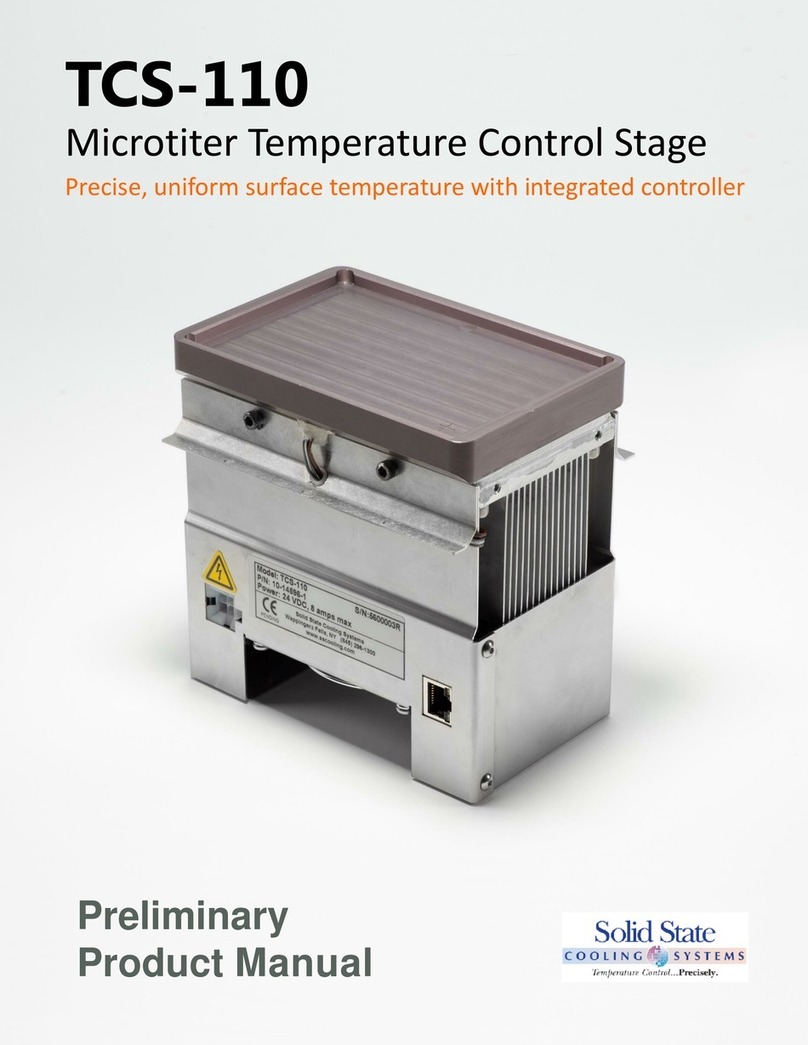
Solid State Cooling Systems
Solid State Cooling Systems TCS-110 product manual
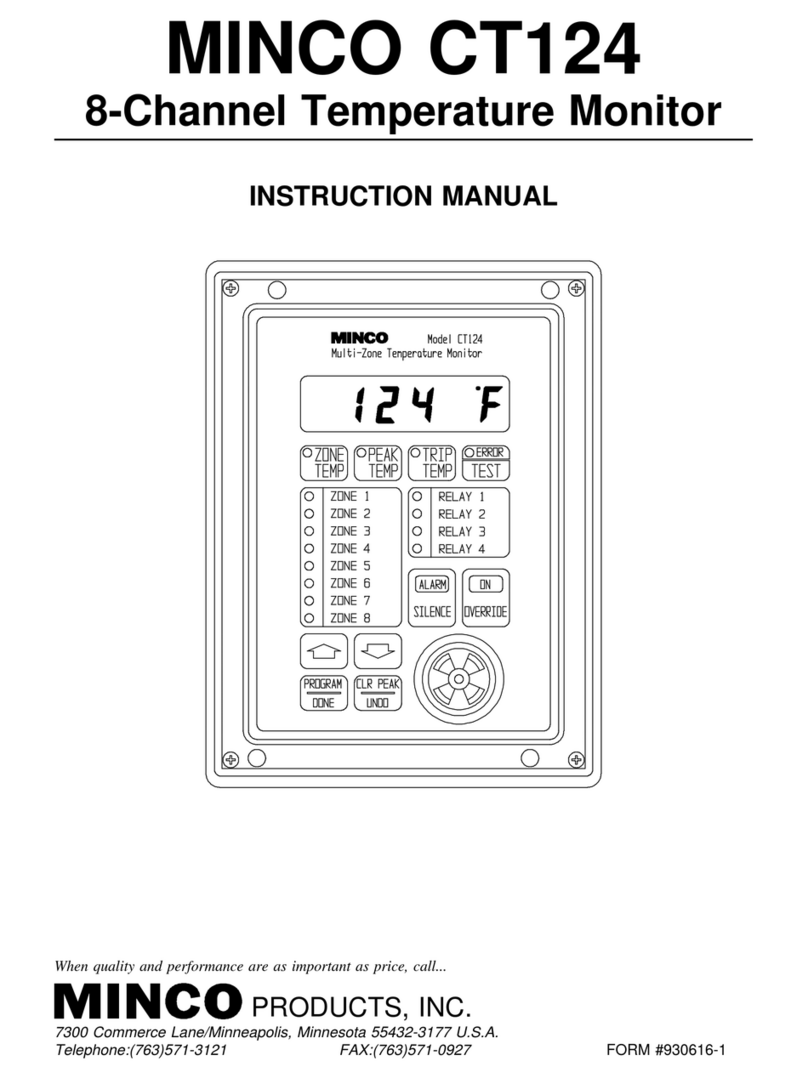
Minco
Minco CT124 instruction manual

ABB
ABB 1795 500 Series operating instructions
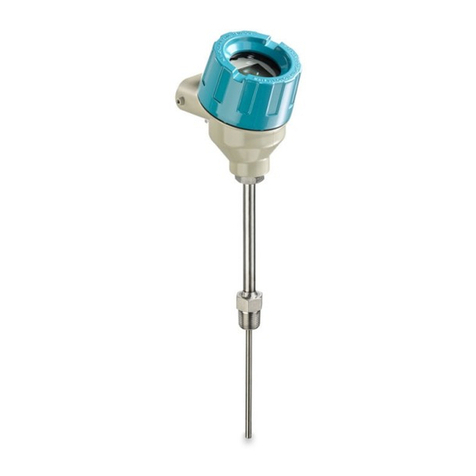
Siemens
Siemens SITRANS TS Series operating instructions

Eurotherm
Eurotherm 2208L Installation and operating instructions
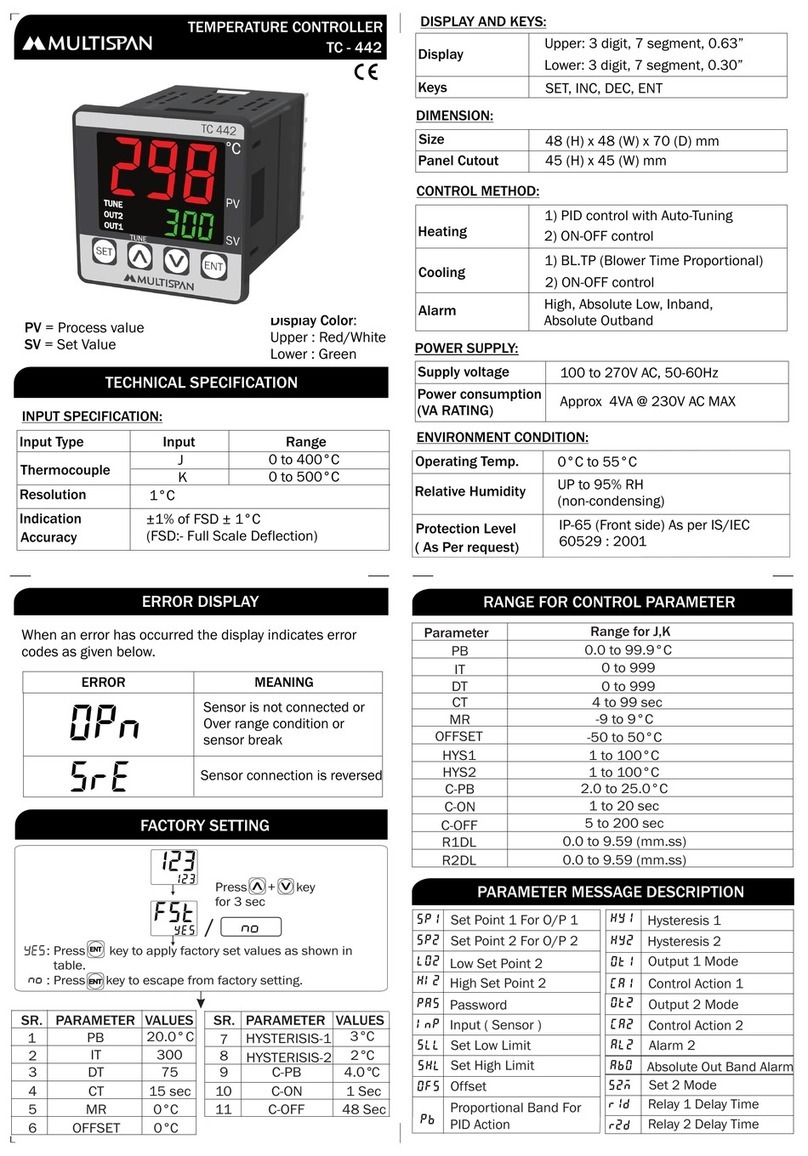
MULTISPAN
MULTISPAN TC-442 quick start guide
